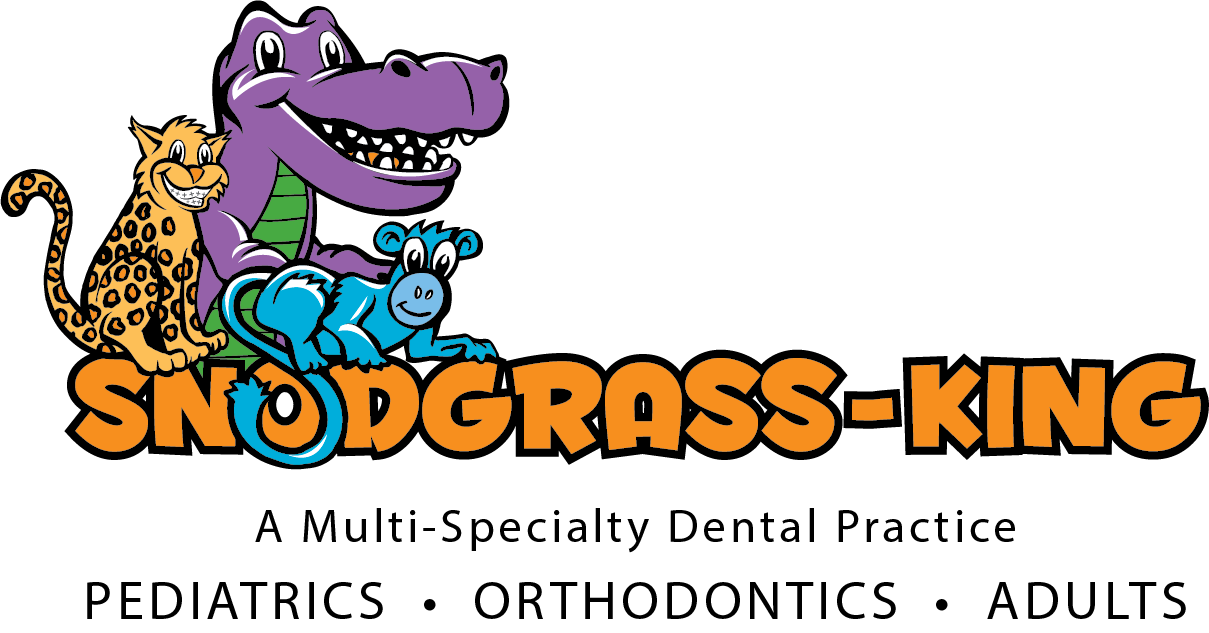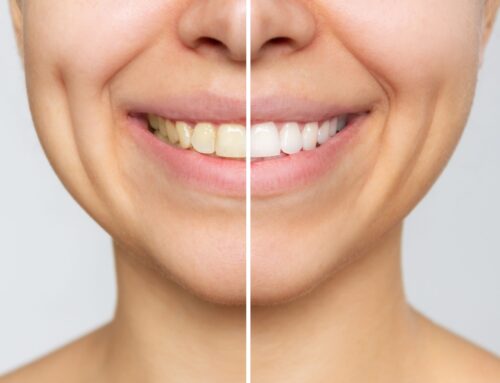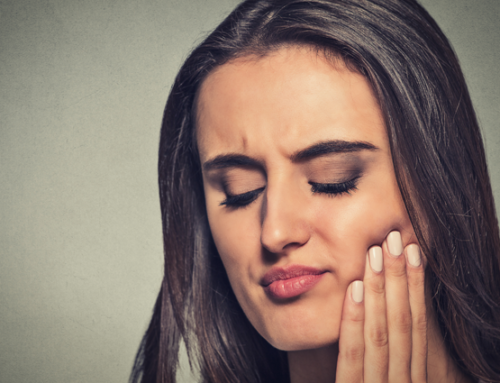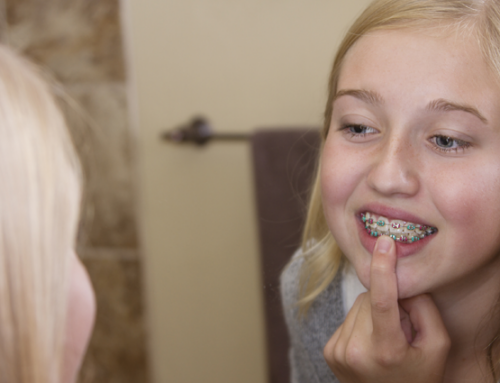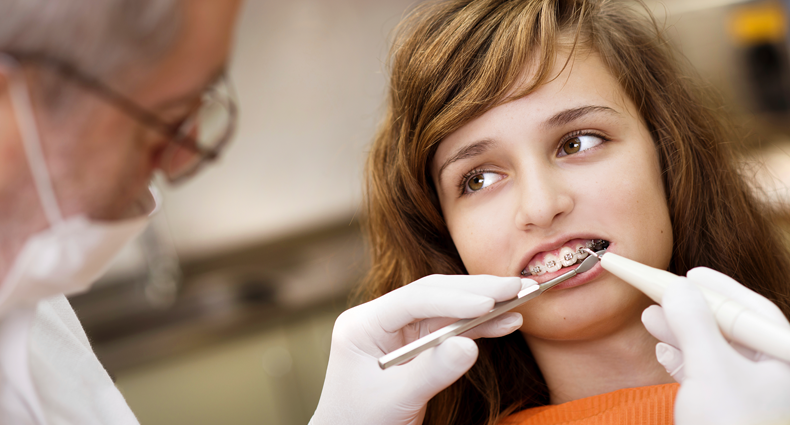
An Orthodontic Cleaning Guide
You just made a major investment in braces…. now what? Well, whether that investment was for your child or for yourself the ultimate goal is to have a beautiful smile you’re proud to show off around Nashville, TN.
However, getting to that part requires a little bit of work on your end. It may not be the most fun part of your day, (an understatement we know) but properly cleaning your braces will help you successfully achieve that beautiful smile you’ve been waiting for.
If you’ve already done the whole braces thing, you want to keep that smile straight and beautiful, don’t you? Well, that requires you to wear your retainer(s), and those things can get gross! So, to help you avoid that we have the ultimate guide for you and your child to keep your braces and retainers clean!
Brush, Brush, Brush!
Brushing and flossing your teeth is all about creating a routine so it becomes a habit. When you have braces, sometimes brushing and flossing your teeth isn’t as easy as it used to be. There are no “extra” steps that you have to take in order to properly care for your teeth. You just need to make sure you are taking the proper steps.
With braces, you have to be more aware of your oral hygiene. It’s easier to get plaque build up which can lead to cavities and other oral issues. You also need to make sure your routine is consistent. For a healthy cleaning routine, you need to remember 3 things to properly clean out all the bacteria.
- Brush your teeth using correct angling. It’s important to know that you are brushing at the right angle to thoroughly clean your teeth.
- Floss or use a Waterpik regularly. You need to floss or Waterpik between each individual tooth and make sure you clean out all the bacteria.
- Use a good mouth rinse to cleanse any lingering bacteria.
Create an Orthodontic Kit for Braces When On The Go
Braces can bring unexpected challenges, and it can be helpful to create a kit so that you’re prepared for whatever the day brings with braces! Here are some items to include:
Kit Contents:
- Toothbrush: Braces of any kind can trap food particles more easily around the brackets. Choose a toothbrush with a small brushing head, soft bristles, and bristle length variety. To make it easier, you could grab a mini toothbrush instead of a full size one for when you’re on the go.
- Toothpaste: Choose a fluoride-containing toothpaste to help with stains and protect against decay. Similar to mini toothbrushes, mini toothpaste is also available to make packing lighter.
- Floss: Use wax floss because it is less likely to shred. You can also find floss with built-in floss threaders to help you get around the brackets quicker.
- Proxabrush: A Proxabrush is an interdental cleaning tool. These small brushes are good for hard-to-reach areas that regular toothbrushes can’t get into, they’re easier to use than dental floss for some people.
- Wax: In case there is a wire poking or bothering them, which in this case you should call your orthodontist as soon as possible.
- Mouth wash: You can’t just brush all the bacteria away! Your child should rinse with mouthwash to kill any germs left behind. Mini sizes are also available!
- Lip balm: Braces can dry out your lips so pack a quick lip balm to use.
Now that we’ve covered what to put in your braces cleaning kit, let us move on to the next most important thing: orthodontic dental cleaning for kids.
emBRACE ‘em!
Good oral hygiene is key to a healthy mouth whether you have braces or not, but it is especially important if you have braces! Braces make cleaning your teeth a bit more complicated because plaque quickly builds up around brackets, bands, and wires. Brushing your teeth after each meal will help prevent cavities, gum inflammation, and bad breath.
Brushing At The Right Angle
When you brush your teeth you need to make sure you are aiming for a 45-degree angle towards your gums. Hold your brush up at a 45-degree angle to clean around the wires and pins of your braces. Brush from the top of each wire down to the bottom.
Use the same brushing action on all outer and inner tooth surfaces, tilting the brush as needed to better reach the insides of smaller front teeth.
Brushing your teeth at an angle helps to get out all the grime that may be stuck on your teeth. When you brush your teeth without using proper angle techniques you can damage your gums or even leave some plaque behind.
Plaque is a sticky film that coats the teeth and contains bacteria that can penetrate the protective enamel of your teeth, attacking the more vulnerable layers underneath. This leads to cavities. If left untreated cavities can lead to dental infections and potentially tooth loss.
Practicing proper brushing techniques can help prevent plaque buildup. Braces can cause “hiding places” for plaque build-up. Just by having braces, you can have two to three times the amount of plaque as non-braces wearers. Not to fear! There are ways you can remove that plaque and build-up safely. Along with your proper brushing you need to use floss or a Waterpik to really get between each tooth to clean out any residual plaque.
Floss it OUT!
Flossing Or Using A Waterpik
Flossing might seem like a huge pain when you have braces and that’s because…it is! You have to thread floss in between each tooth and make sure that you clean properly. One way you can avoid flossing between each tooth but still get the job done is using a Waterpik. A Waterpik is a brand of water flosser or an oral irrigator that sprays water to remove food from between your teeth. With the power of the water shooting between your teeth it removes the plaque build-up just like floss would do.
For those who have braces, a Waterpik is clinically proven to be more effective than dental floss. Like regular flossing, a Waterpik or water flossing removes food stuck between your teeth and the bacteria lingering there before it hardens into plaque. Your toothbrush can’t get into those small spaces. Water flossing can also reduce gum disease and bleeding.
Waterpik especially helps those with braces reach some of the harder areas of their mouth with ease. With braces flossing can be painful and time-consuming, using a Waterpik can be more effective. When using a Waterpik correctly it shouldn’t take any longer than it takes you to brush your teeth. For best results, it’s recommended to start with the back teeth and work toward the front teeth. Continue until you have cleaned the inside and outside of both the upper and lower teeth.
You want to focus on the top of your teeth, the gum line, and the spaces between each tooth. Remember to get the back of your teeth, too. This can help ensure that the entire mouth gets cleaned thoroughly. Waterpiks are fast and effective when it comes to cleaning between your teeth with braces. The last step in your new routine is to rinse out your mouth.
And do not forget to floss every day!
Don’t Forget the Proxy Brush!
Finally, you want to clean your teeth with a Proxabrush, or another braces-specific cleaning brush. Your orthodontist will give this to you after you get braces. This brush is specifically designed to clean braces. You will push the brush down from the top between two braces, stroke several times, and remove. Then, push the brush up from the bottom between the two braces, and repeat. You will repeat this practice until all the braces have been cleaned.
After these steps, your teeth and gums should be nice and clean. If you have any concerns or questions about specific aspects of orthodontic dental cleaning for children, please ask us! We are always here to help make sure that we keep their smiles healthy as they grow up.
Mouth Rinse ‘n Wash
Adding a mouth rinse to your oral hygiene not only makes your breath smell better it also helps prevent tooth decay. With braces, a mouth rinse can effectively get into and flush out any of the leftover bacteria from your brushing and flossing. It usually contains an antiseptic to kill harmful bacteria that can live between your teeth and on your tongue. When you do all of these steps it can not only make your mouth smell better but feel better as well. It can also help your next dental visit feel more enjoyable. Helping the dentists to not have to spend so much time scraping off the plaque from your braces.
Post Braces, The Dreaded Retainer
Now that you have that beautiful smile, it’s your job to keep it! Retainers are a necessity to preserve your smile. That means you need to take good care of them. A retainer is exposed to many germs through your saliva, food particles, and really anything that enters your mouth. Not cleaning a retainer can lead to bigger problems like infections. So, how do you clean your retainer when it’s in a germ-y predicament?
The best time to clean your retainer is when you take it out to brush your teeth. You need to use a toothbrush with soft bristles and mild soap. Gently scrub your retainer with the toothbrush and rinse thoroughly.
For a deeper clean, no more than once a week, you can disinfect your retainer by soaking it in a denture cleanser. Add the cleanser to a cup of warm water—not hot, hot water, which may shrink the retainer! Then, after you let your retainer soak, rinse it very thoroughly with plain water before placing it back in your mouth.
Things to avoid when cleaning your retainers:
- Avoid scrubbing with toothpaste. This can easily roughen the surface, and create more surface area for bacteria to attach and hide.
- Be careful not to over-soak.
- Do not use vinegar as an at-home cleaning alternative. It may increase the porosity of the acrylic and can corrode retainer wiring if used long enough.
- Avoid exposing to excessive heat
- Do not put your retainers in a place where your pets can get ahold of them.
- Don’t forget to bring your retainers to your appointments so the orthodontist can check you are cleaning them properly!
For additional information on cleaning your retainer, check out this retainer guide.
Visit Snodgrass-King Dental Today
If you are looking at getting braces or already have braces but want to improve your cleaning routine, visit us today. At Snodgrass-King, we know a lot about braces and what kinds of cleaning routines and flossing techniques should be properly used. It is important to keep your mouth healthy so that you are staying healthy. We want to help you achieve the best kind of dental care you can. If you are curious about getting a Waterpik we can give you our top recommendations so that you can start getting the best deep clean you are looking for.
Snodgrass-King Dental Associates has 4 locations across Middle Tennessee (Mt. Juliet, Murfreesboro, Franklin, and Spring Hill). Contact us today to see if we can help jump-start and be a resource in you or your child’s healthy, dental lifestyle. We offer a variety of services for both children and adults. We can also address any orthodontic needs for children, teens, and adults. If you have any questions, call us today at (615) 771-1111.
